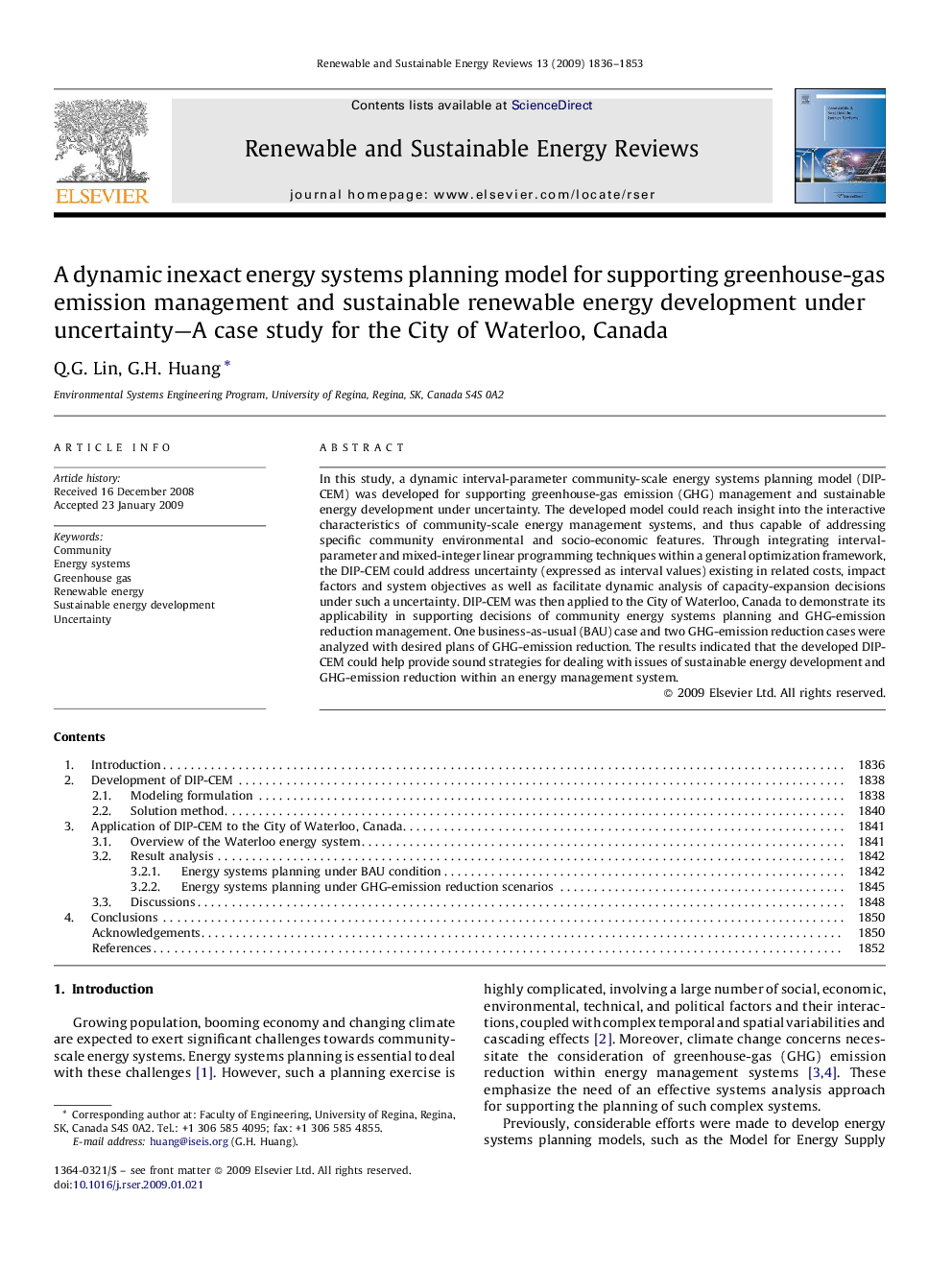| Article ID | Journal | Published Year | Pages | File Type |
|---|---|---|---|---|
| 1751993 | Renewable and Sustainable Energy Reviews | 2009 | 18 Pages |
In this study, a dynamic interval-parameter community-scale energy systems planning model (DIP-CEM) was developed for supporting greenhouse-gas emission (GHG) management and sustainable energy development under uncertainty. The developed model could reach insight into the interactive characteristics of community-scale energy management systems, and thus capable of addressing specific community environmental and socio-economic features. Through integrating interval-parameter and mixed-integer linear programming techniques within a general optimization framework, the DIP-CEM could address uncertainty (expressed as interval values) existing in related costs, impact factors and system objectives as well as facilitate dynamic analysis of capacity-expansion decisions under such a uncertainty. DIP-CEM was then applied to the City of Waterloo, Canada to demonstrate its applicability in supporting decisions of community energy systems planning and GHG-emission reduction management. One business-as-usual (BAU) case and two GHG-emission reduction cases were analyzed with desired plans of GHG-emission reduction. The results indicated that the developed DIP-CEM could help provide sound strategies for dealing with issues of sustainable energy development and GHG-emission reduction within an energy management system.
